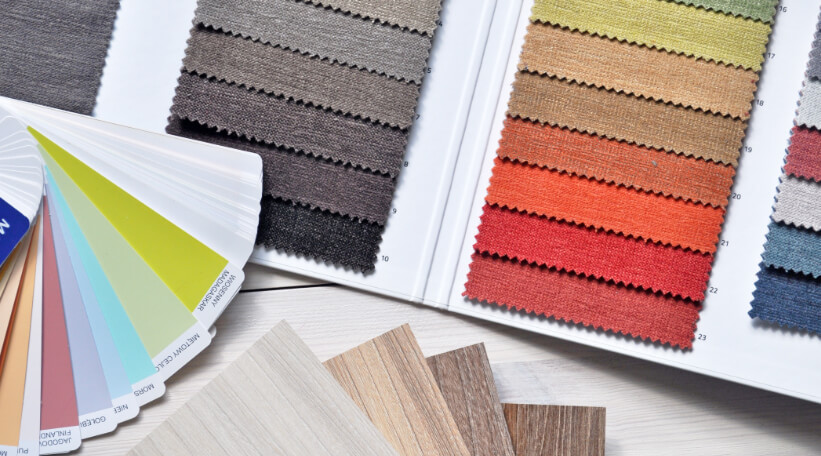Don’t worry about totally decorating a new home, remodel or reconstruction. We have you covered!
By Tammy Adamson-McMullen
Unless you’re an interior designer or professional decorator, the thought of totally decorating a new home, remodel or reconstruction can be scary! However, there are steps you can follow to move in the right direction. These steps will help you hone in on your preferences so that you can live with your decorating choices for the long haul. Let’s begin …
- Create a Color List
First things first, make a list of your favorite colors. From this list, select the colors you feel are most
“livable.” For inspiration, search through Pinterest, Houzz and other social media sites.
- Examine the List
Next, give a critical eye to your list. Are the colors mostly cool in tone (with a blue base) or warm in tone (with a yellow or red base)? To achieve color flow from room to room, which is a hallmark of good design, you’ll want to stay with a warm or cool palette throughout the house. But this rule can be broken; for instance, warm taupe walls and cool blue draperies might coordinate beautifully if they’re picking up colors from a pattern in the room. But overall, you should keep to one “temp.”
- Refine the List
Of course, you may already know your preferred decorating palette. Maybe it’s represented in your current furnishings—in a favorite chair, area rug or piece of art. If so, you’ll be able to develop your palette quite easily. But whether you start with Step No. 1 or 2, you’ll need to refine your palette, choosing a main color, secondary color, accent colors and supporting neutrals.
- Refine it Further
If you need help with Step No. 3, visit your local paint and decorating center. Take roomset photos, swatches, a favorite pillow—anything that has inspired your colors thus far—and look for coordinating paint chips. If needed, consult with the store’s color expert to help as you narrow down choices. Then take home the color cards you’ve selected and view them on different walls and in various lighting conditions. Additionally, you might ask if the store offers small jars of paint in your colors so that you can create larger paint-outs on sample boards.
- Hone in on Your Decorating Style
Once your palette is established, it’s time to hone in on your preferred decorating style. Is it traditional, mid-century modern, contemporary, farmhouse chic, Bohemian, Boho-chic, Asian-inspired, eclectic or some other style? If you’re not sure, the answer again might lie in your favorite furnishing, a room photo you found in a magazine or on the internet, or maybe even in your style of dress. It may not be financially feasible to transform every room of the house into your chosen style, but you can do this over time. One way to stay on track is to create a “design box” with magazine clippings, room photos, fabric swatches, floor samples, a furnishing wish list and other decorative ideas.
- Sort Through Furnishings
If you find that the majority of your furnishings don’t work with your new colors and style, you’ll need to make important decisions, based on budget: Will you keep your existing furnishings and transform them—maybe with paint or slipcovers—to fit into your new decorating scheme? Can you live with what you have at present and possibly replace individual pieces over time as your budget allows? Or do you have the budget to replace “off” pieces altogether? All of these options are viable, but answering them will help as you move forward.
- Accessories, Too
Sort through your accessories, too. Weed out any that might unsettle the look or feeling you’re trying to create with your new design. If something is no longer “you,” don’t hesitate to find it a new home.
- Consider the Largest Spaces…
Now it’s time to apply your color and style decisions. Begin with the largest spaces in your home, such as the living, dining and family rooms. Which color will dominate? Which colors will serve as supporting players? And where will these colors actually appear within the space? One way to easily answer these questions is to place your darkest values underfoot (such as carpeting, wood, tile and resilient flooring); mid values for walls and furnishings (paint, wallcovering, upholstery, cabinet finishes, etc.); and lightest values for the ceilings. This is a rather intuitive way to decorate, since we also see this dark-to-light value in nature.
For trim, you have all sorts of options, from wood tones to light neutrals to lighter or darker values of the main color. Whatever color you choose, try to stay consistent from room to room, or your new design will look disjointed.
- …Then Smaller Ones
For your smaller rooms, simply select colors from your larger spaces and adapt them. Here are a few suggestions for a bedroom, based on a palette in the larger spaces of teal/light blue/taupe and white:
- switch up your main, secondary and accent colors—taupe/light blue/teal and white;
- select a lighter or darker value of one or more of the colors in your palette—aqua/mid-tone blue/light beige and cream;
- add an additional accent color—teal/light blue/taupe, white and lime; or
- eliminate the secondary color altogether—teal/blue/white.
- Most Importantly…
Enjoy the process! Decorating a home from top to bottom can’t be done overnight. So relish in each step, congratulating yourself on the decisions you’ve made and lessons you’ve learned along the way.

 Interior Paints
Interior Paints Exterior Paints
Exterior Paints Primers
Primers Stains & Clears
Stains & Clears
 Paint Brushes
Paint Brushes Paint Roller
Paint Roller Paint Trays & Liners
Paint Trays & Liners
